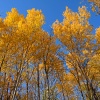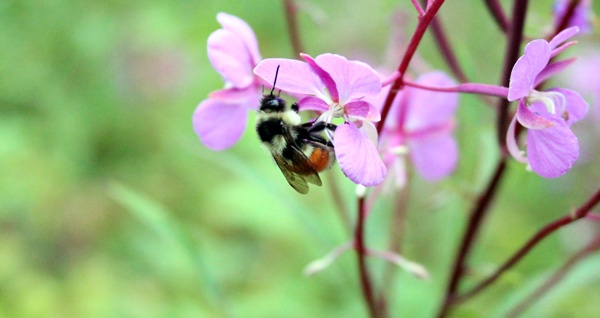Spring finally seems to be sticking around here in Minnesota and we could not be more ready for the longer days and warmer sun. If one of the things you’re most excited about when spring creeps in is getting outside to your garden or to your landscaping, the time has come to uncover a new season!
Did you know that between 60 and 70 percent of bees nest in the ground? Many will use your backyard, including piles of leaves, to make their nests over the winter. It’s important to be mindful of these potential homes when preparing your garden for spring. Bee experts advise waiting until the weather is consistently above 50 degrees to begin work so as to not disturb hibernation. Learn more about nests for pollinators and fall preparation from U of M Extension.
The U of M Extension also has great resources about your yard and garden, and the U’s Bee Lab provides a list of the best pollinator friendly plants you can use around your home to nurture pollinators in Minnesota. Consider planting species on their list that bloom in different seasons to provide for the bees throughout the year.
I am personally glad so much more of the home gardening and landscaping conversation in Minnesota has begun to include pollinator friendly plants and alternative turf to the traditional lawns. Some lawmakers are even buzzing about bee lawns to incentivize converting your lawn to a pollinator friendly bee lawn. Even if you’re not ready to make the switch to a rain garden or low maintenance turf grasses, there is still a lot you can do to provide habitat and happy homes for our crucial pollinator friends. In preparation of spring, try leaving the clover and dandelions in your yard—and don’t spray them!—to provide foraging areas for bees. If you’re a mower, try mowing every other week and not during blooming times to help pollinators.
Look around your area for spring plant sales that are free of neonicotinoids—insecticides that have been implicated in the decrease of bee populations. Look for Minnesota-hardy pollinator friendly perennials, grasses, natives and annuals. I recommend the Hennepin County Master Gardener Program’s Annual Plant Sale. Master Gardeners will be on hand to provide you with information about plant care.
Bees rely on flowers and their nectar and pollen to survive, and we rely on bees for so many of our food sources. They’re vital to our food system and to sustain life on our planet, and we can do our part by providing a diverse array of plants in our yards to ensure more food sources for our bees here in Minnesota. Encourage your local government to adopt a resolution or an ordinance to encourage local businesses and residents to adopt pollinator-friendly practices.
Happy planting!
Keely

